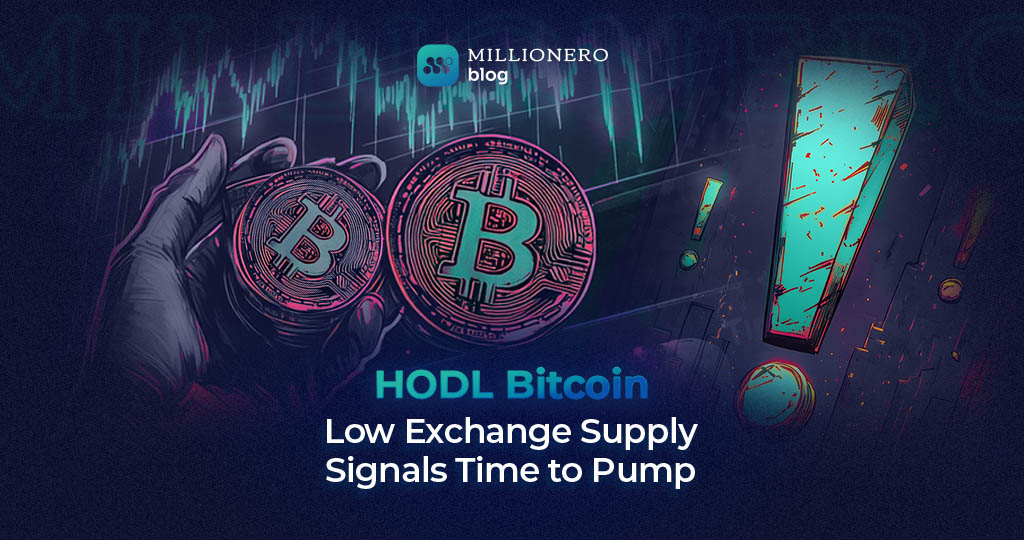
According to data from Glassnode, an on-chain analytics platform, Bitcoin (BTC) now has more holders than ever before. The asset’s illiquid supply—meaning Bitcoin that isn’t actively being traded—has steadily increased, reflecting a growing trend among investors to HODL Bitcoin rather than sell. At the same time, the supply controlled by short-term holders and exchanges has been declining.


Source | @Crypto_banter X
These strong holding signals are seen as bullish by Bitcoin enthusiasts, who believe the increased accumulation points to a bright future for the cryptocurrency. Crypto Banter highlighted this trend, suggesting that the steady rise in Bitcoin’s stored supply is a sign of “mega HODLing vibes,” which could indicate that a rally is on the horizon.
Supply Metrics: HODLers vs. Short-Term Holders
Glassnode’s data presents two contrasting trends. Stored supply metrics, such as long-term holder supply and illiquid supply, are increasing. These include coins held by long-term investors or those that are considered lost. On the other hand, active supply metrics, which track short-term holders and exchange balances, are declining.
As of 2024, Bitcoin’s illiquid supply has reached an all-time high, and long-term holder supply has also grown significantly. Meanwhile, the short-term holder supply has dropped, along with the liquid and highly liquid supplies. This data suggests that more investors are opting for long-term holding strategies, reducing the overall supply available for trading.


Source | CryptoQuant
Interestingly, CryptoQuant reports that Bitcoin reserves held in centralized exchanges have dropped significantly since November 2023, reaching near all-time lows of 2.64 million. Lower exchange reserves typically indicate reduced selling pressure, as investors prefer to store their Bitcoin in personal wallets rather than leave them on exchanges, further supporting the trend of increased holding.
Institutional Adoption of Bitcoin
Bitcoin is not just attracting individual investors; institutions are also getting on board. According to a report from River Financial released in September, institutional adoption of Bitcoin has surged by 30% over the past year and has grown by 587% since 2020. Institutions now hold over 3% of all Bitcoin in circulation, viewing it as a hedge against inflation and a way to diversify their assets.


U.S.-based companies, in particular, hold a significant portion of Bitcoin, with 49.3% of business Bitcoin holdings, valued at $19.7 billion. This adoption by large-scale investors marks a major milestone in Bitcoin’s journey toward mainstream acceptance.
Bitcoin ETFs: A Game-Changer for Investors
Bitcoin exchange-traded funds (ETFs) have also gained popularity. Approved by the U.S. Securities and Exchange Commission (SEC) in January, these ETFs have seen rapid inflows. According to SoSoValue, net flows into Bitcoin ETFs hit $273.71 million on October 18, with total assets now valued at $66.11 billion.
Despite some initial outflows, particularly from Grayscale’s investment product following its conversion, the overall inflows into Bitcoin ETFs have been strong. Farside Investors reports that total net inflows have reached $20.2 billion, even as $20 billion left Grayscale’s fund. BlackRock’s iShares Bitcoin Trust has captured the largest share of inflows, with over $22.4 billion.


Source | @EricBalchunas X
Bloomberg ETF analyst Eric Balchunas noted that Bitcoin ETFs reached their inflow milestones in just 10 months—a feat that took gold ETFs five years to achieve.


Source | Chainalysis
The Federal Reserve’s Role in Bitcoin’s Popularity
The SEC’s approval of these ETFs, along with the Federal Reserve’s recent decision to cut historically high interest rates, has fueled investor confidence. Investors have been cautious about riskier assets like Bitcoin due to concerns over inflation and rising rates. However, with rates coming down, the appetite for Bitcoin and other “risk-on” assets has returned.
Currently, Bitcoin’s price sits at $67,373, after rising by nearly 11% in just seven days. Just two months after the Bitcoin ETFs were approved, Bitcoin hit a new all-time high of $73,737. Balchunas have pointed out on X that without these investment vehicles, Bitcoin would have struggled to maintain its value amidst this year’s market volatility.
Conclusion: A Bullish Near-term Future for Bitcoin?
The data paints a clear picture: Bitcoin is being held more than ever, both by individual investors and institutions. With centralized exchange reserves declining and illiquid supply increasing, the overall sentiment around Bitcoin remains optimistic. As institutional adoption continues to grow and Bitcoin ETFs attract more capital, the cryptocurrency’s future looks bright.
That said, nothing we say is financial advice. It’s always important to do your own research (DYOR) to stay informed and make the best decisions for yourself. Check out blog.millionero.com for more insights and guidance. Once you feel confident, you can trade both spot and futures on Millionero—a platform that offers a wide range of trading options for all levels of experience.

